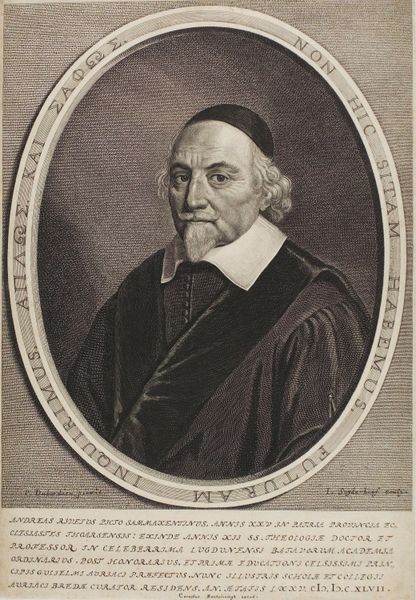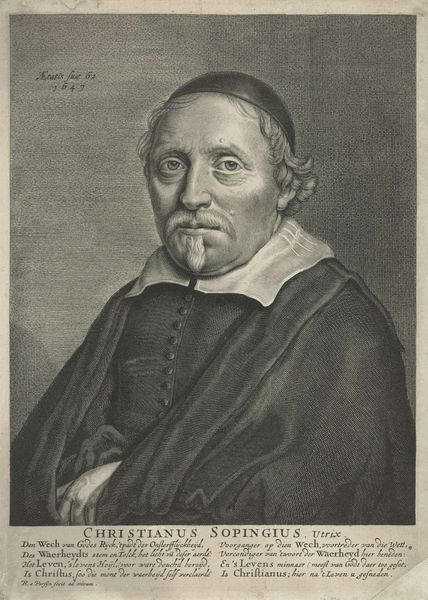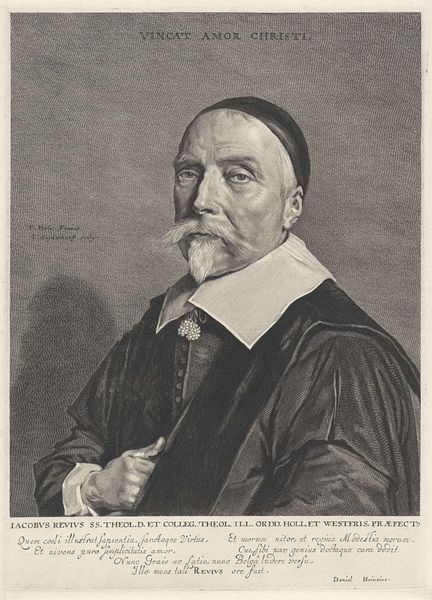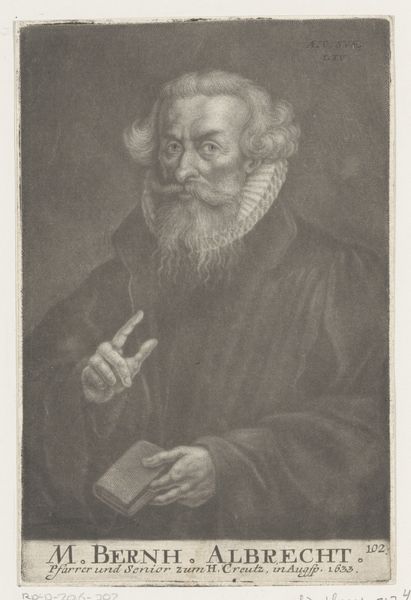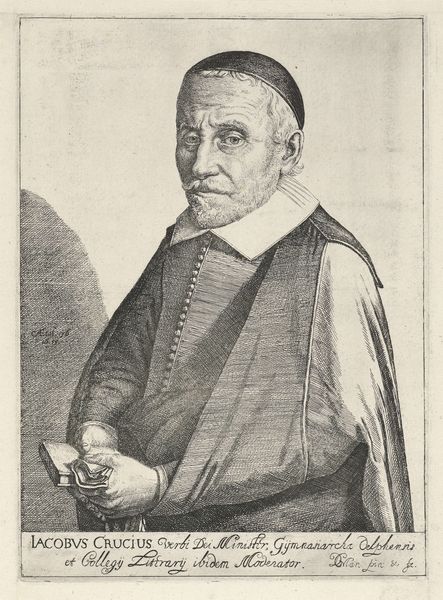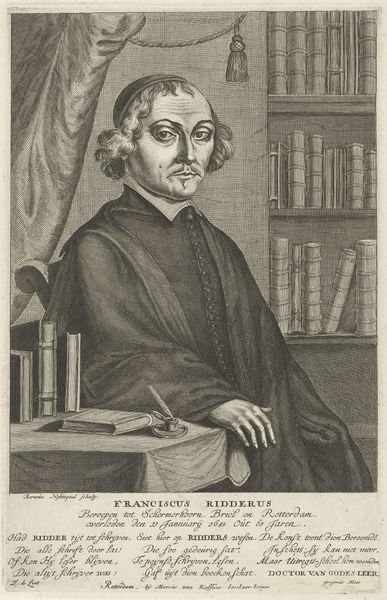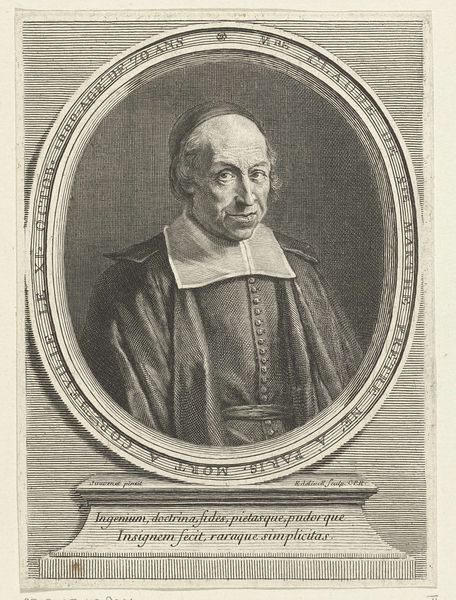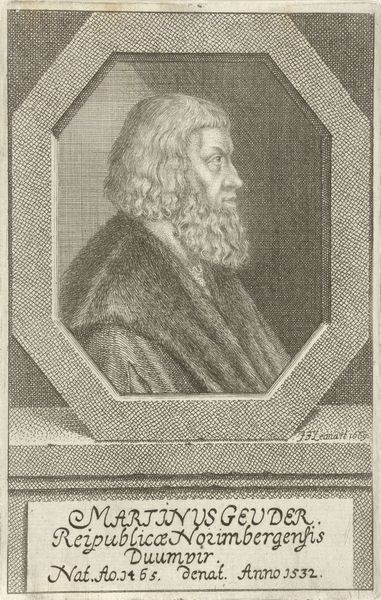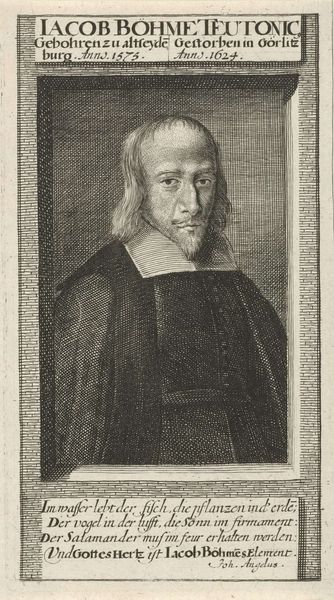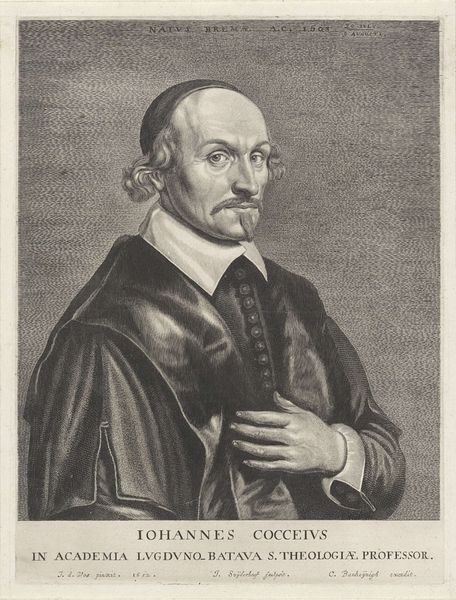
engraving
#
portrait
#
baroque
#
dutch-golden-age
#
line
#
portrait drawing
#
engraving
Dimensions: height 274 mm, width 195 mm
Copyright: Rijks Museum: Open Domain
Editor: Here we have Jacob van Meurs’ 1650 engraving, "Portret van André Rivet." It's quite striking how much detail van Meurs achieves with just line work! What's your take on it? Curator: What strikes me immediately is the subject’s apparent age and the date of the portrait: 1650. Considering this within the context of the Dutch Golden Age, a period marked by both immense prosperity and religious and political upheaval, how might Rivet's portrait, in its seeming simplicity, speak to the complexities of that era? What do you observe about Rivet’s attire and expression? Editor: Well, his clothing seems rather somber, and his expression thoughtful, maybe even a little stern. It makes me think of a man of deep conviction. Curator: Exactly! Rivet was a prominent Calvinist theologian. The sober attire and thoughtful expression are not just personal characteristics, but deliberate signifiers of his religious and intellectual stance within a society wrestling with reformation and its aftermath. Consider the engraving itself – its widespread production meant this image circulated, shaping perceptions of Rivet and, by extension, Calvinist values. Can you see how this image functions as both a portrait and a piece of political communication? Editor: That's fascinating! It's more than just a likeness; it's constructing a specific identity for a specific audience. Curator: Precisely. And thinking about it as an engraving, as a reproducible image, raises questions of accessibility, dissemination of ideas, and the role of art in shaping public opinion during a tumultuous time. Editor: I’m definitely seeing the portrait in a new, more nuanced way now. Thanks for pointing out the connection between art, identity, and broader historical currents. Curator: It's these connections that bring art history to life. Understanding the context helps us decode the image, and see how it resonates even today.
Comments
No comments
Be the first to comment and join the conversation on the ultimate creative platform.
